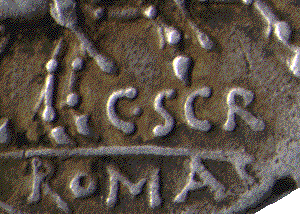 Contents -
Previous Article -
Next Article
Contents -
Previous Article -
Next Article
Cato the Elder
234 - 149 B. C.
Marcus Porcius Cato was a wealthy Roman landowner who strongly believed in the traditional Roman Republican values and stood as a symbol for those ideals. He believed that the rural, farming life was the best and most virtuous life for a Roman citizen. He believed that the Greek culture and ways that were brought back to Rome by her conquering armies actually did more to weaken the Roman people than to strengthen the state. He also saw Carthage as a major menace to Rome and, when he was a Senator, ended every speech he made with the words "Carthage must be destroyed", regardless of what the rest of the speech was about. He even brought a huge bunch of grapes, grown in Carthagenian soil, to a meeting of the Senate in order to impress upon the rest of the senators that Carthage's great agricultural capacity posed a dangerous threat to Roman leadership in the Mediterranean. It was partly due to Cato's constant inveighing against Carthage that Rome imposed an impossible ultimatum upon the city. This led to the Third Punic War in which Carthage was burned, her inhabitants slaughtered, and even the stones from which the city was built were scattered. The Romans even symbolically sowed the earth with salt around the site of the destroyed city in effect saying that Carthage would never rise from the ashes. One hundred years later, Carthage was an important Roman town in North Africa.
Cato served as quaestor, aedile, praetor, consul, and censor in the Roman government. He also served as a military general, winning major victories in Spain. He used his powers as censor to get rid of many senators whom he felt were a corrupting influence on Roman society.
Cato the Elder wrote the first history of Rome that was not an epic poem. Parts of this work, the Origines, still survive but most of it is lost. He also wrote a treatise on agriculture that still survives.
Go to next article:
Go back to previous article:
Return to Roman Writers, Writing, and Historians Table of Contents
 Contents -
Previous Article -
Next Article
Contents -
Previous Article -
Next Article